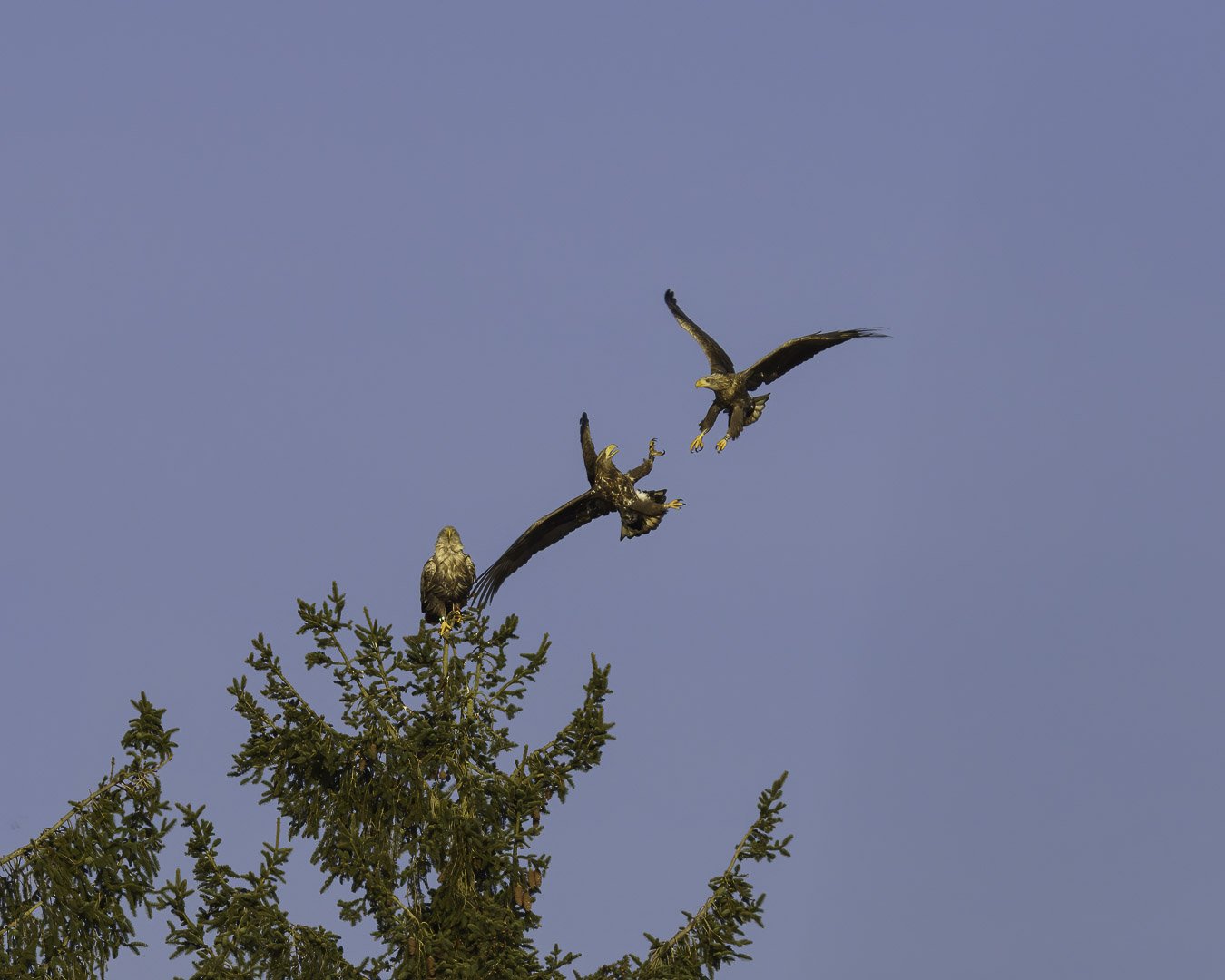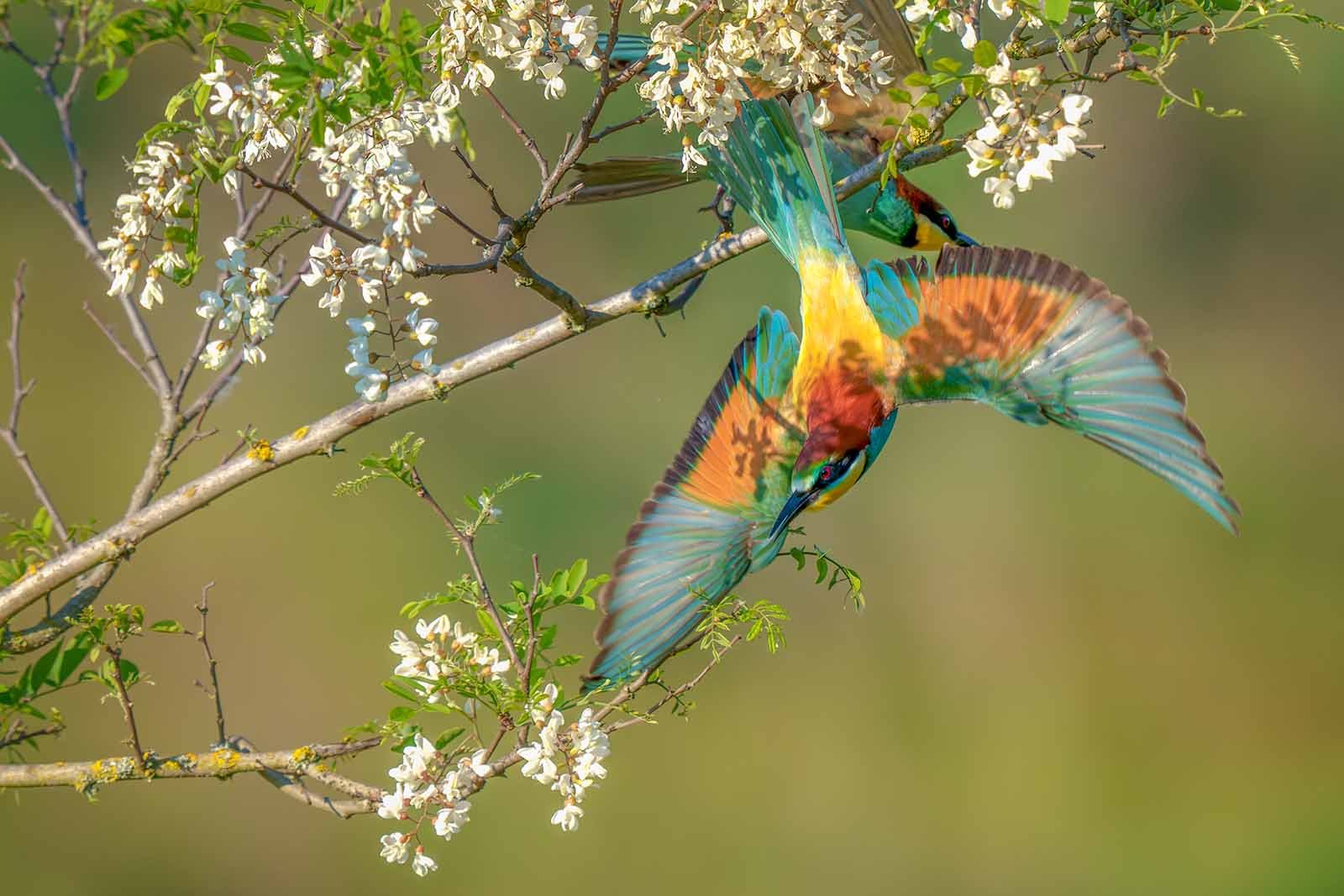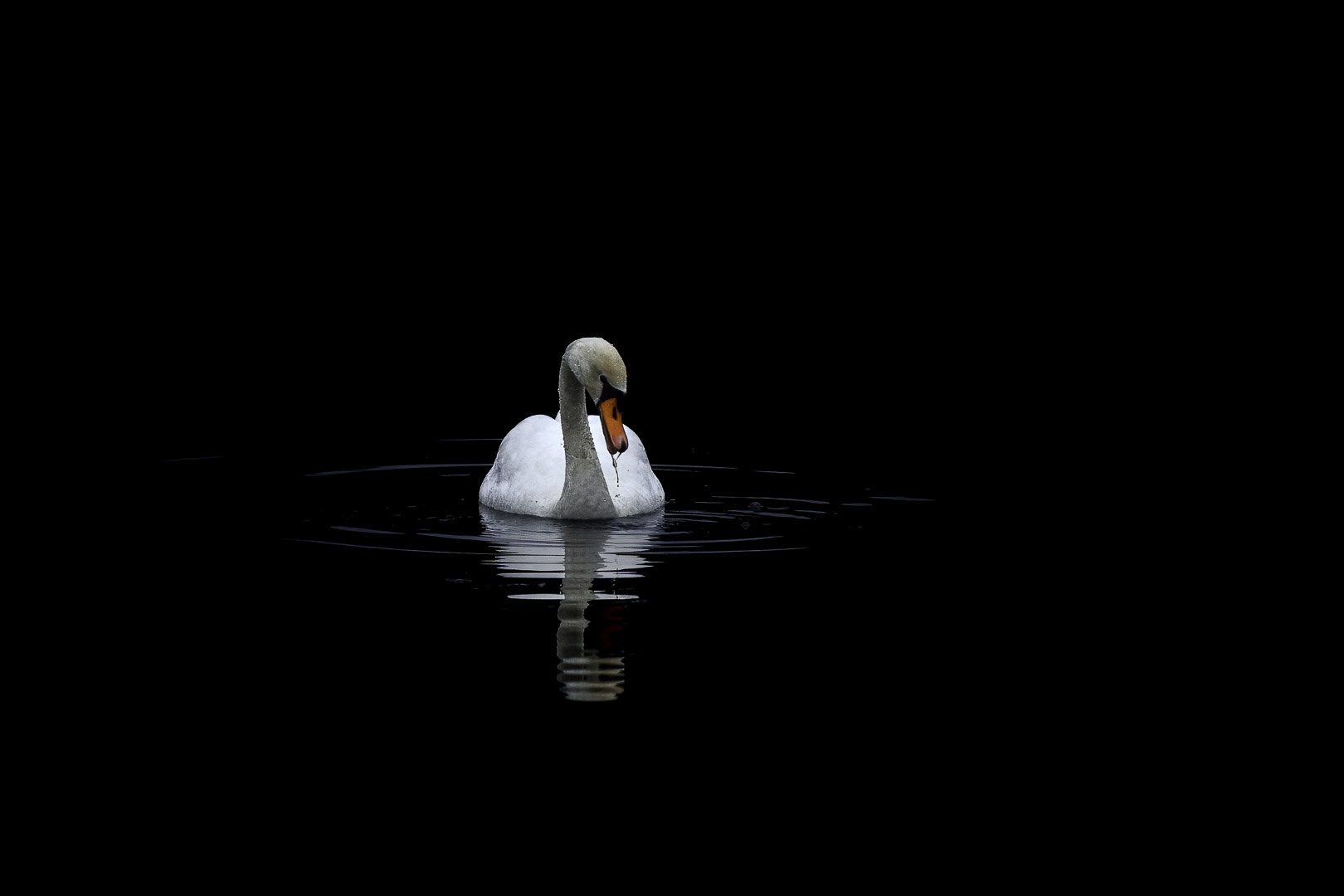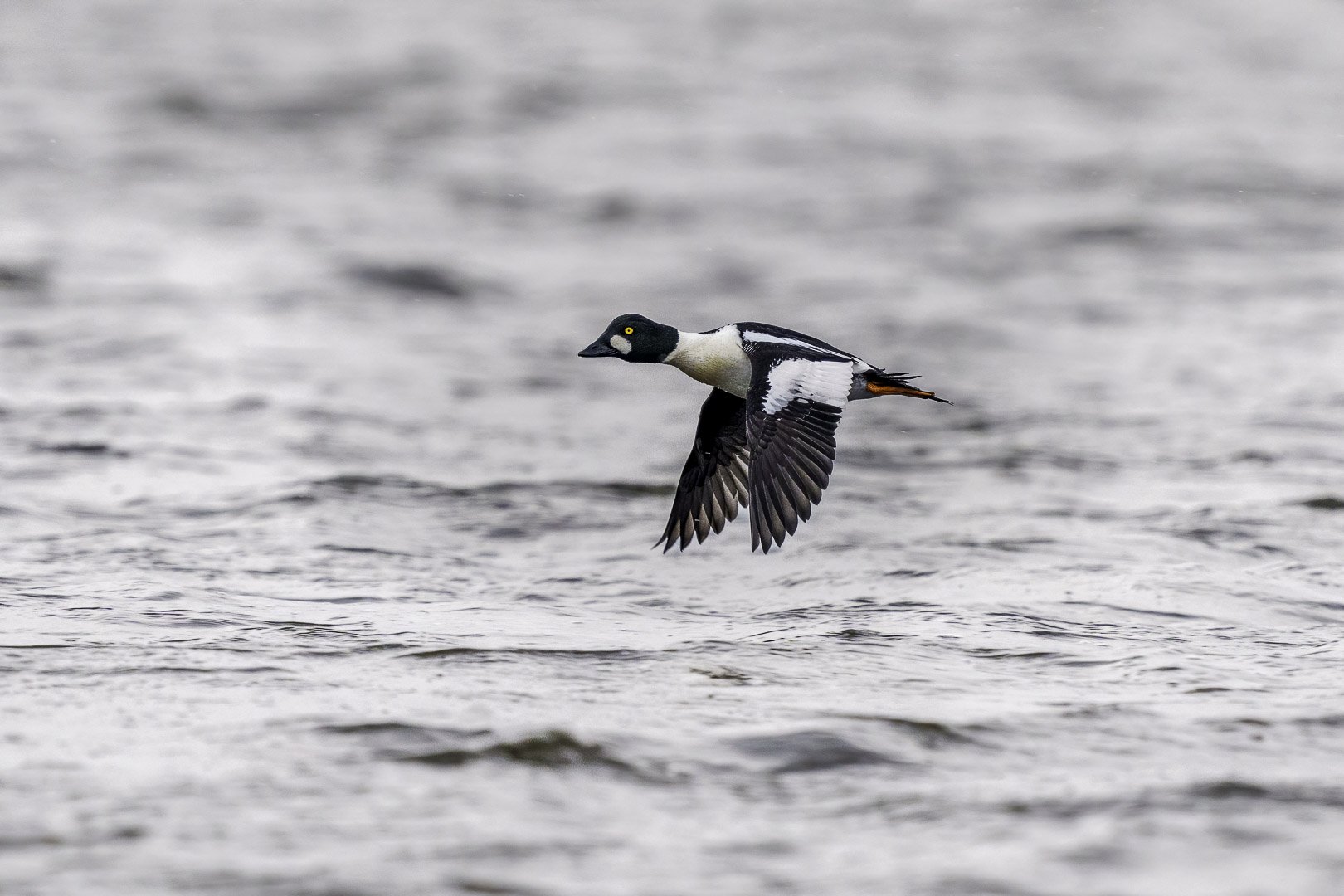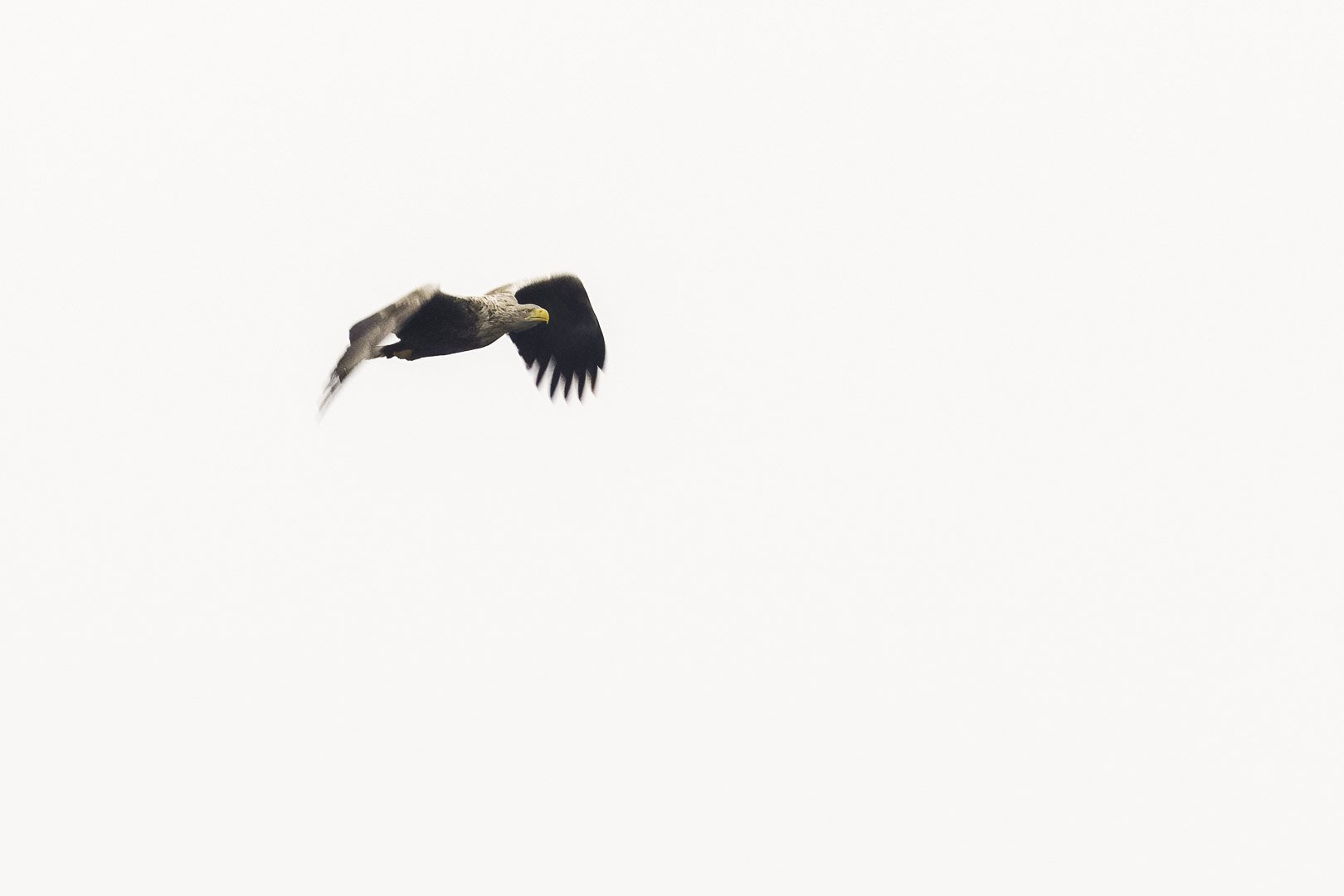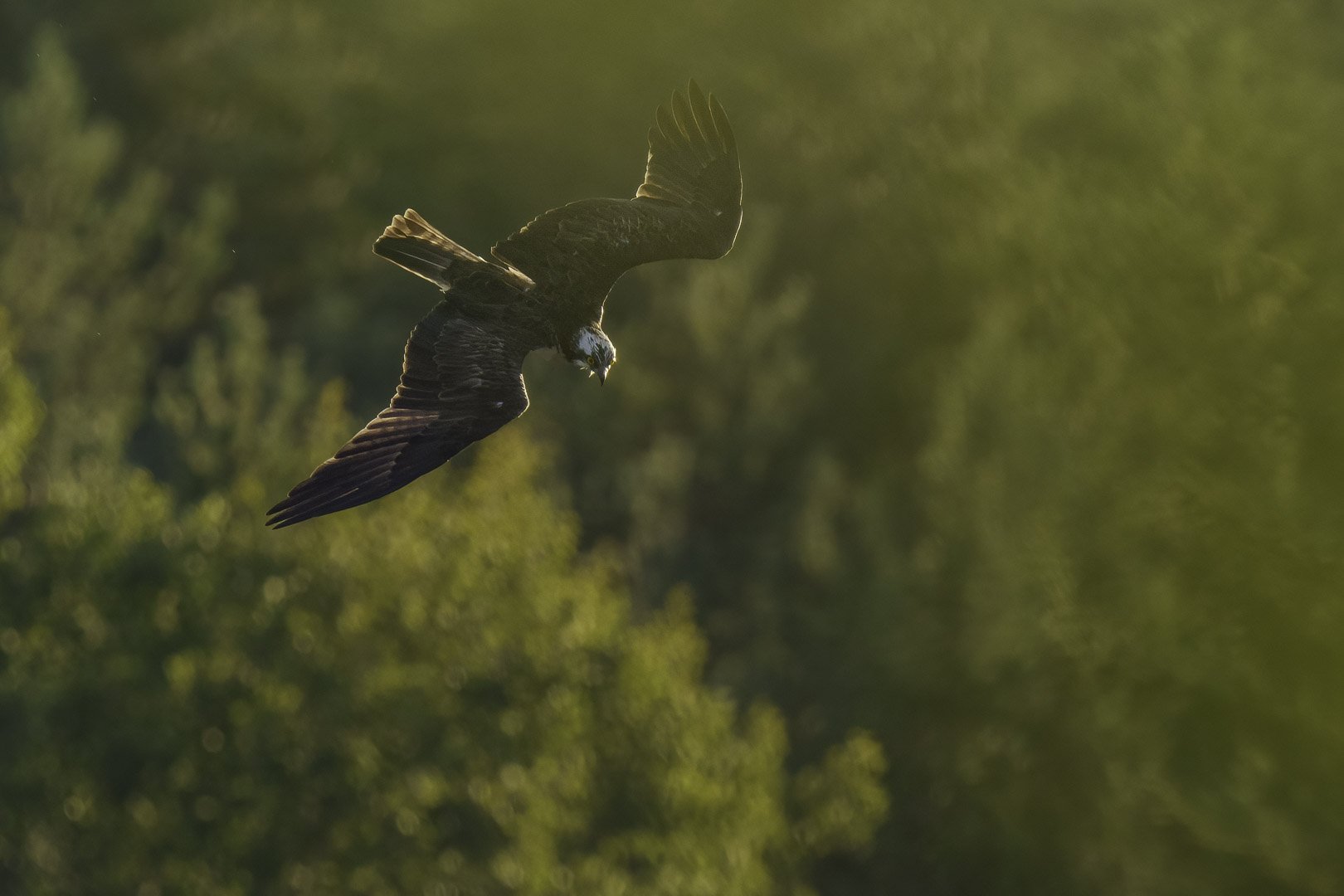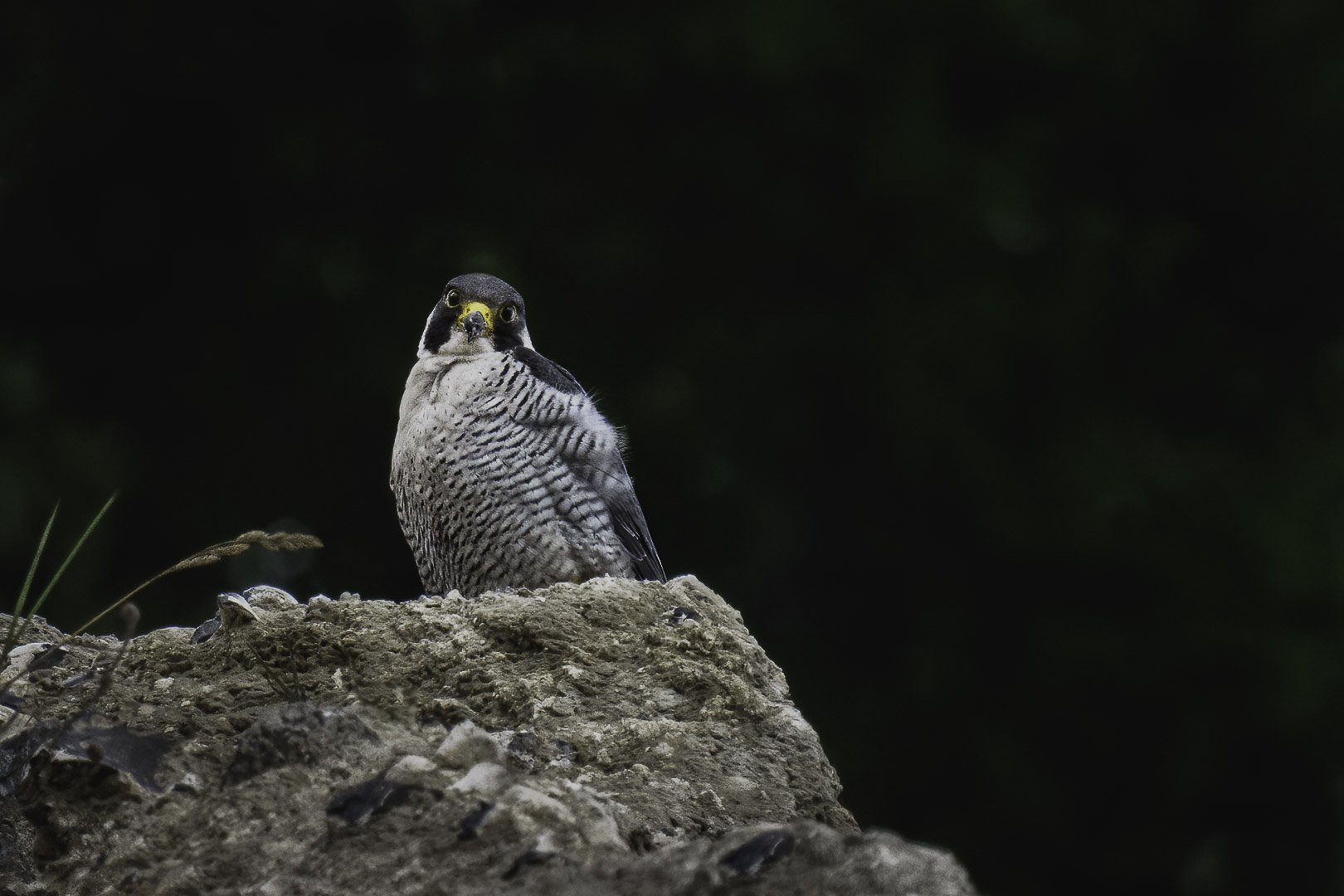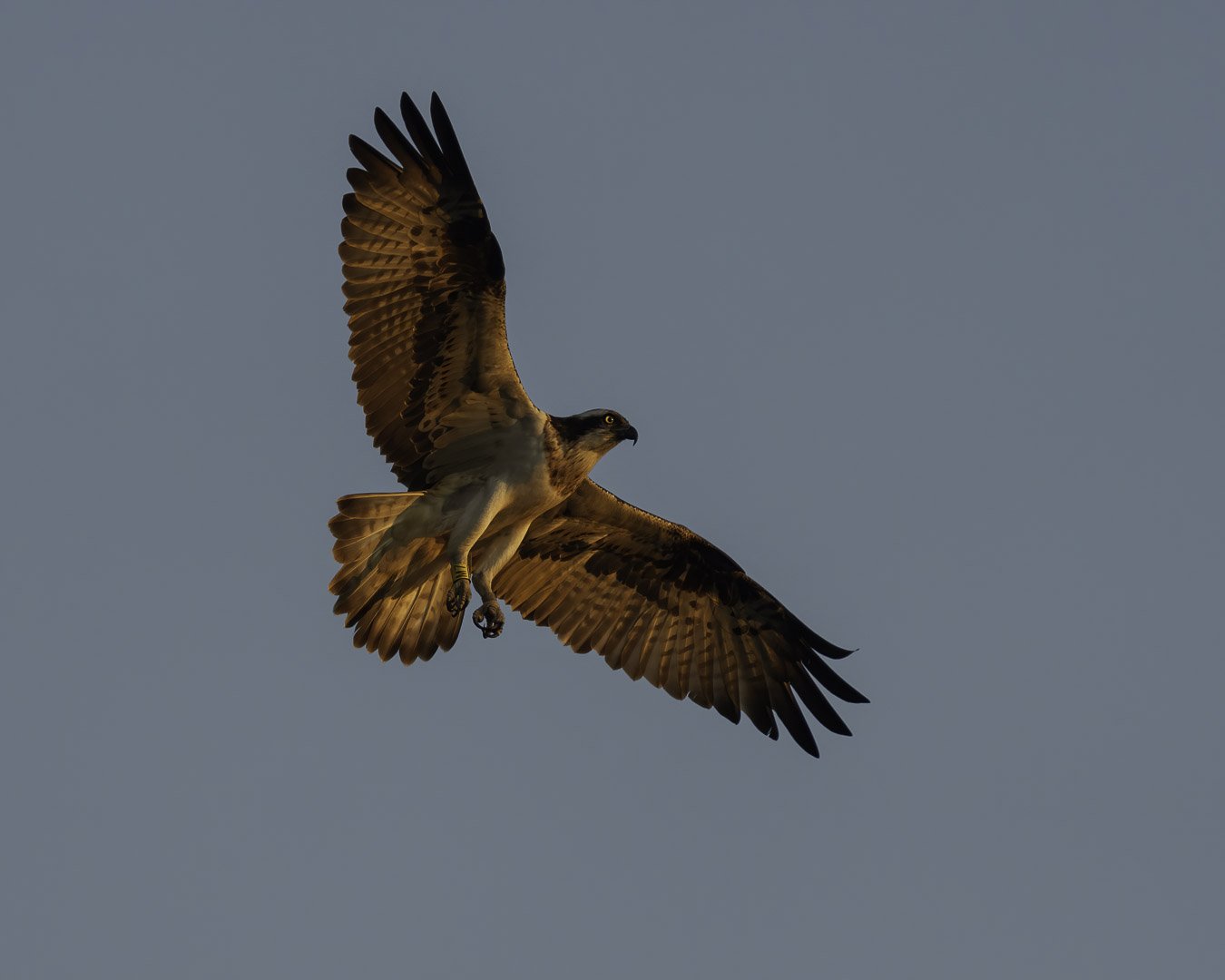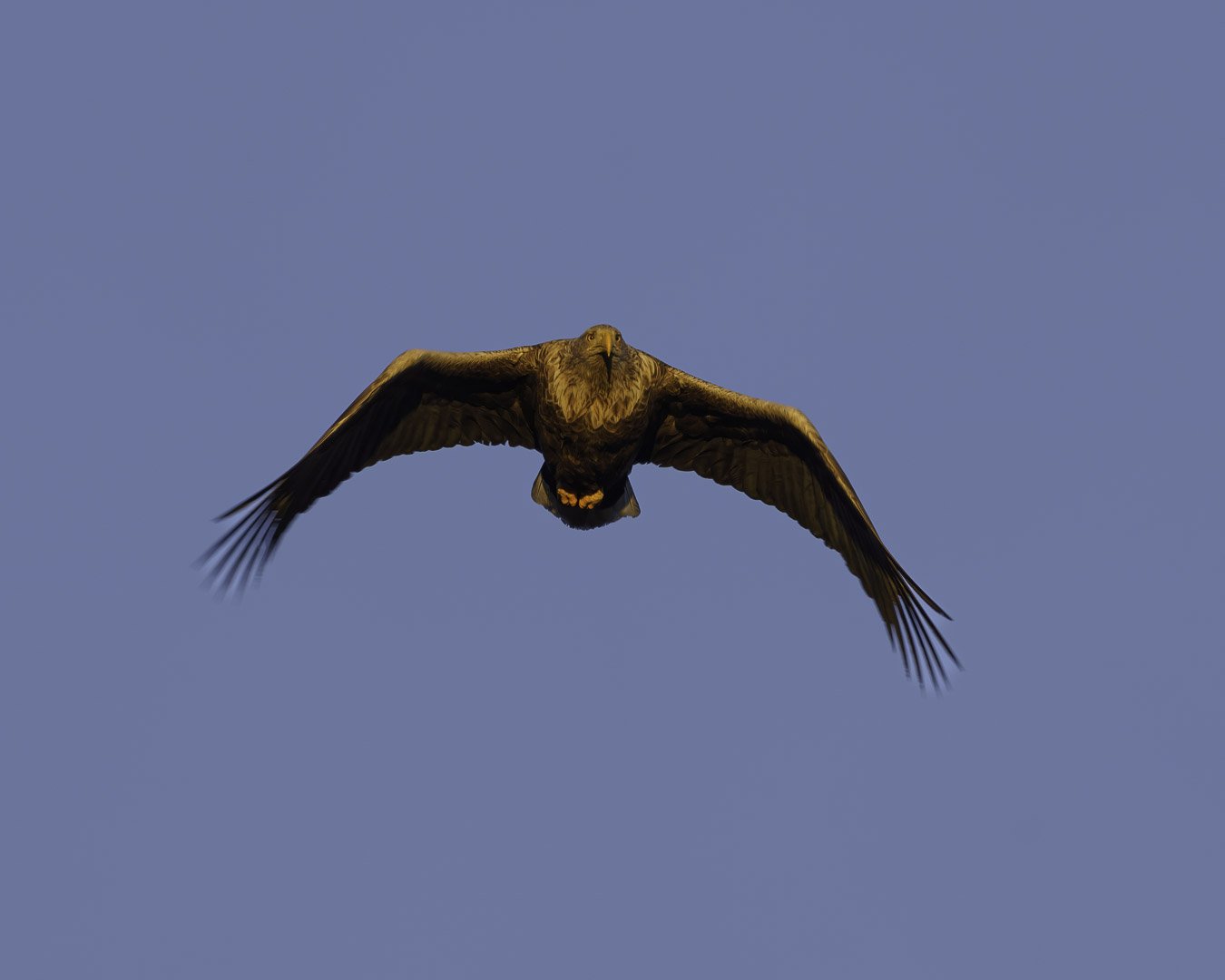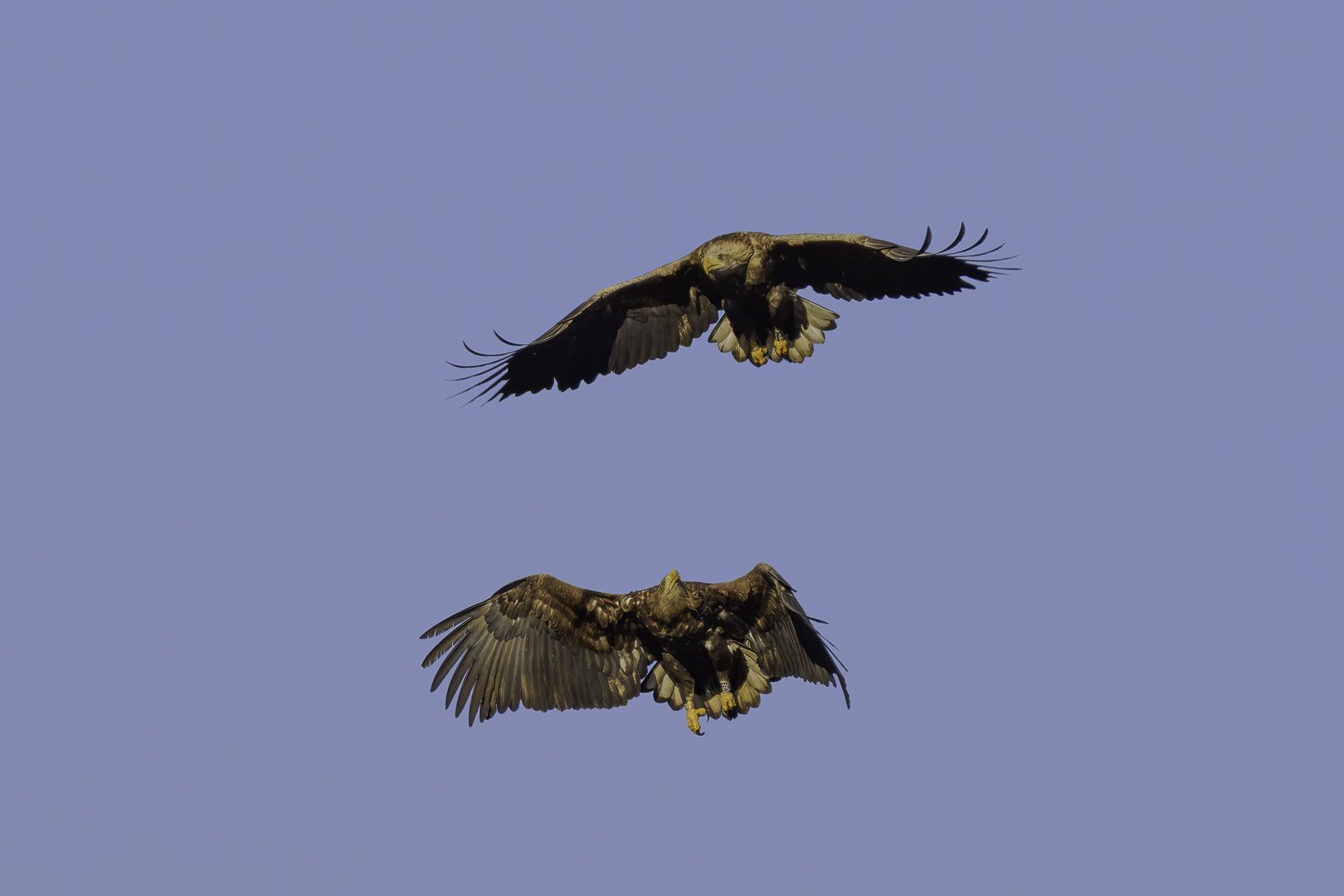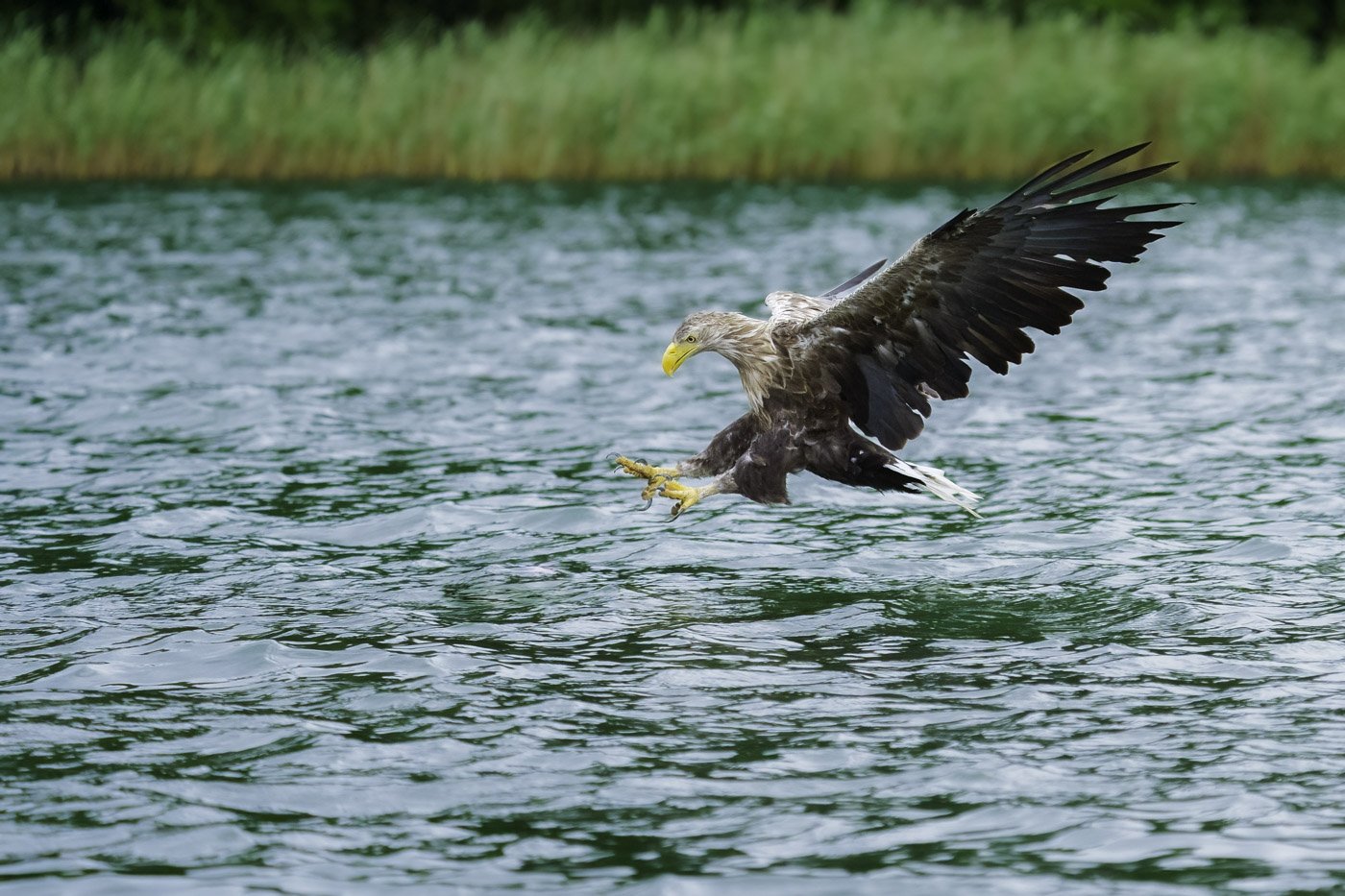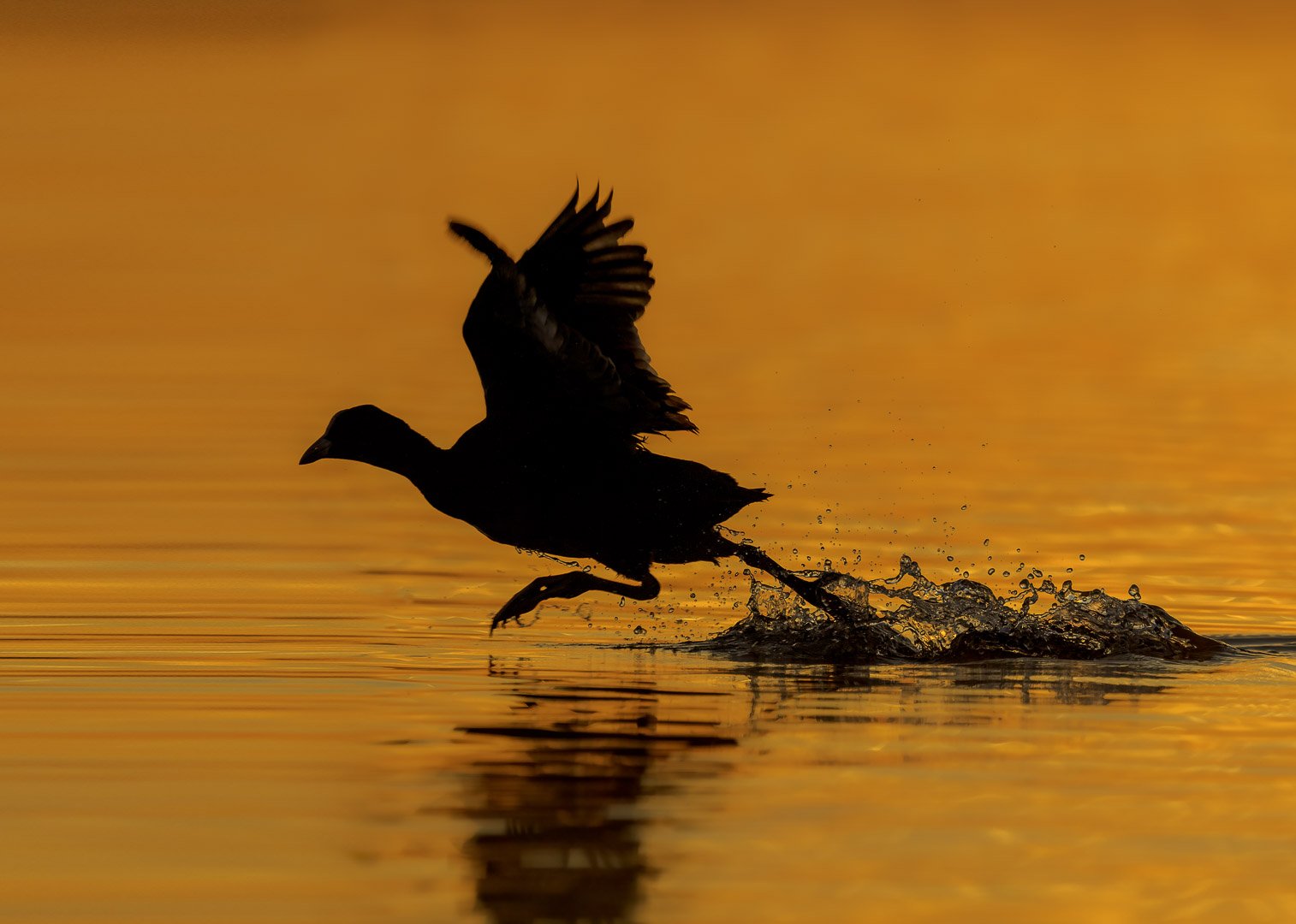White-Tailed Eagles in Upper Palatinate – Implementation #4
White-tailed eagle at dawn over the forest in Upper Palatinate, Bavaria
Part 4 - Implementation Day 2
Saturday, 6:20 AM. My wife and I have been sitting at the same spot as yesterday for an hour. The golden hour is ending, and sunrise is imminent. Yesterday at this time, I had already encountered a young white-tailed eagle. Today, however, there was no activity until suddenly the silhouette of an eagle appeared on the horizon. We waited eagerly to see if more eagles would follow and perhaps come closer to us.
Shortly after, everything happened in quick succession: The eagle whose silhouette we had just seen steered directly towards a dead tree about 100 meters away and perched on one of the branches—just like the day and the weekend before. It seems this tree has a magical attraction for the white-tailed eagles (Haliaeetus albicilla).
Two minutes later, two more eagles joined in. They first perched on a nearby spruce. One of them then flew to the already occupied dead tree, where the other young eagle was sitting. Bingo!
The light wasn't strong enough yet, so I had to start with a low shutter speed again. Normally, this isn't an issue with perched birds of this size. But the two eagles had other plans; they didn't intend to stay still. With a powerful flap of their wings, they took off and began to squabble in the air.
White-tailed eagle mock fight
The aerial battles lasted for a while. Eventually, one of the combatants returned to the bare tree near me and perched on one of the many branches. After some time, it moved to the top of the old tree. As soon as it settled, the bird began to call out in a raspy voice.
Junger Seeadler beim Ruf
Then the second combatant returned to the tree where the calling companion was perched.
The third white-tailed eagle continued to sit atop a spruce, surveying the area. Through the camera, I could tell by the features that it was an adult.
The sun rose, and the light improved!
The situation was now this: the adult sat undisturbed atop the spruce, and the young eagles were full of energy. They flew back and forth, mock fighting, flying over the older eagle, and performing acrobatics, grabbing pieces of wood as if they were prey and chasing each other. It was a ruckus over the pond. This was a unique experience that I tried my best to capture in photos.
This action continued for a long time until another young eagle joined in and added its input. 😃
Then the three young white-tailed eagles flew together towards another pond, and the adult eagle did the same, but in a different direction.
Three young white-tailed eagles flying one above the other
As I had done the day before, I was able to read the rings on the images of the two young eagles. I was eager to find out what information I would receive about them.
What a white-tailed eagle day—something I couldn't have imagined!
We packed up our equipment and ended this adventurous day, hoping to have another such experience the next day.
Part 4 — Implementation Day 3
Sunday, 8:00 AM, nothing—no eagles so far, but around 6 AM, a car arrived at the opposite pond, and two people got out. The day seemed ruined, I thought. I had no hope that an eagle would show up. Not after, this car with the two occupants appeared, posing a disturbance and a threat to the eagles. I wondered what this car was doing in the nature reserve in the first place. Later, I found out that another car with a couple had camped there.
Waiting for the white-tailed eagles
9:22 AM, an adult white-tailed eagle came to the pond where we were but kept its distance, followed by a young eagle that settled near the adult. Then nothing happened; the two birds sat there, and around 10 AM, they flew off.
The day wasn't a grand finale, but so what, the weekend was more than spectacular. So much white-tailed eagle action in Bavaria—I could never have imagined it!
-
If you spot animals with markings that you can read, you have the opportunity to report this to NABU. By doing so, you help track these animals, aiding NABU in creating statistics about the population and providing information about the animal, such as age, origin, etc.
More information can be found here:
When you next observe animals in the wild and see a ring with a letter/number combination, it is not a runaway animal from a wildlife park or zoo. These are animals banded by conservation organizations to collect information about the population.
-
Adult White-Tailed Eagles
Recognizable by their bright head feathers, which appear almost white and clearly distinguish them from the rest of the brown plumage.
Identified by their yellow beak, amber eyes, and white tail feathers (tail).
Very Young EagleHas a black beak tip
Dark eyes
Brown plumage with light spots.
-
Lens: Sony 200 – 600 mm F5.6 / 6.3
Camera: Sony a7R IV
Tripod: Rollei Rock Solid Alpha XL Mark II Carbon
Tripod Head: Flexshooter Pro Lever
-
Origin: Upper Palatinate, Germany
Body mass: 3490g at banding
Banding date: 14.05.2020










